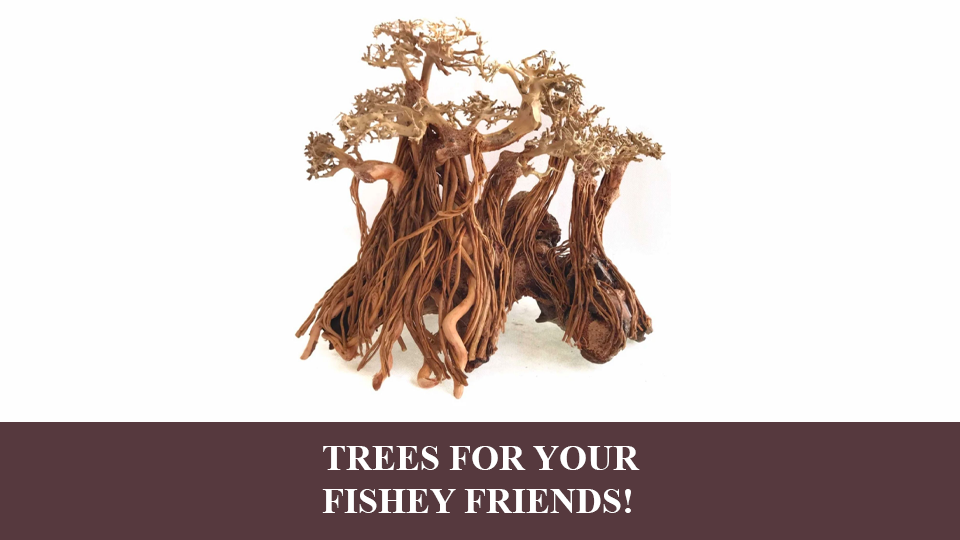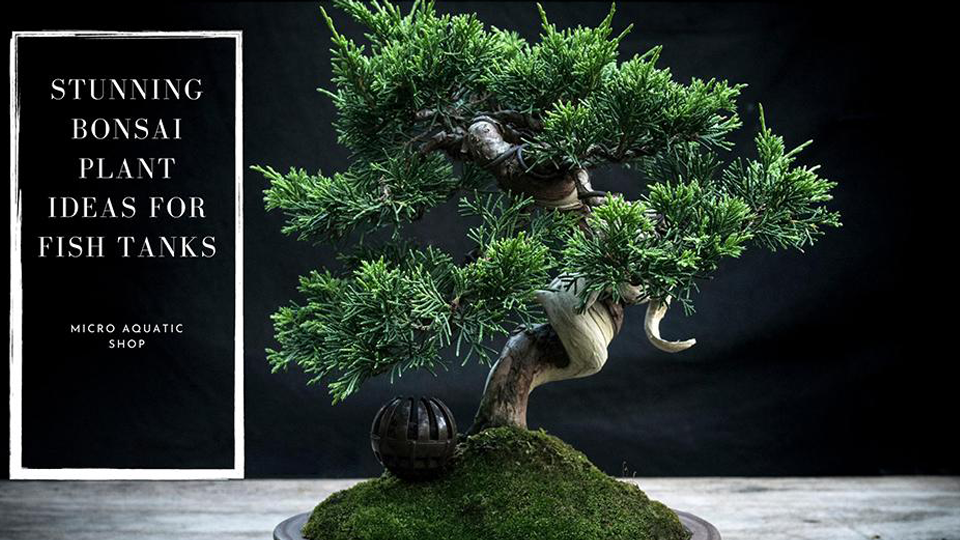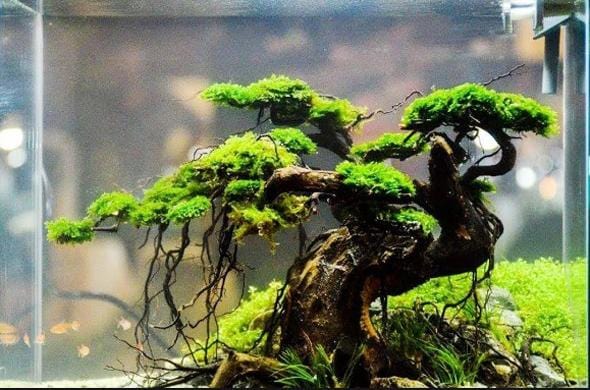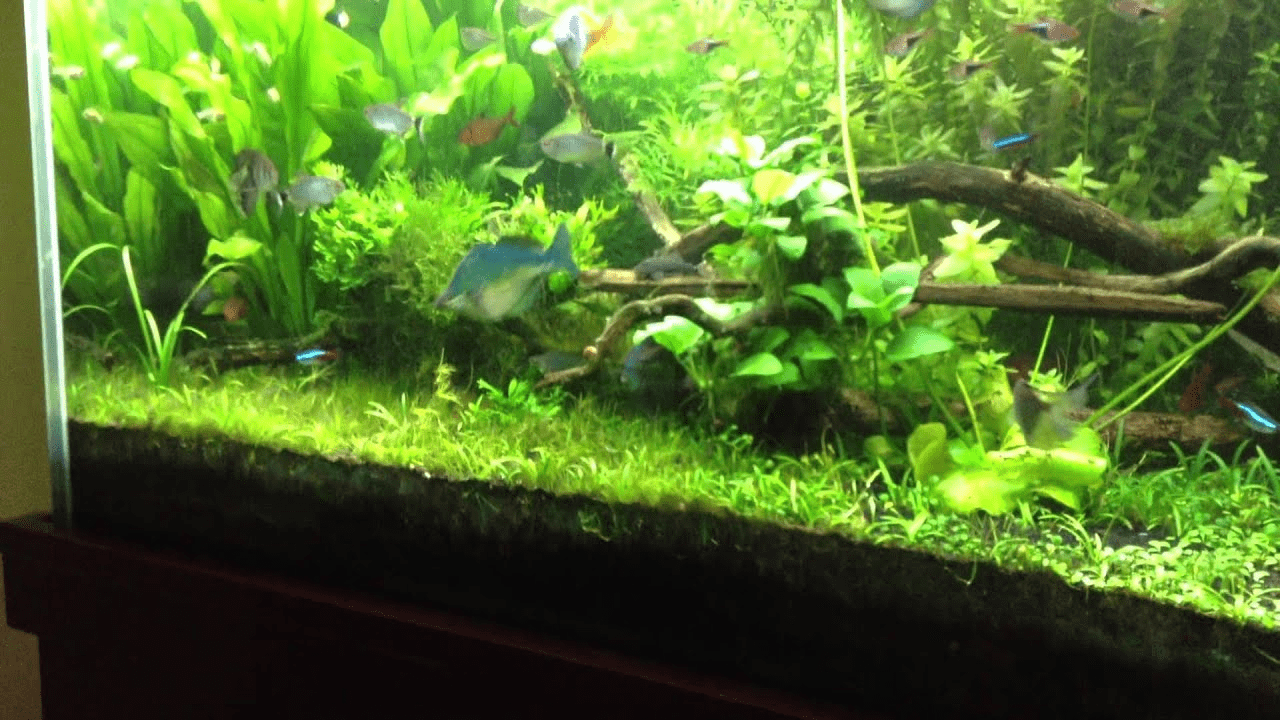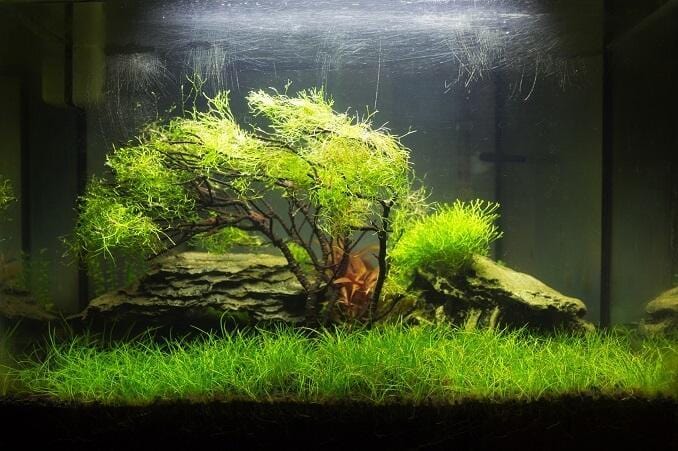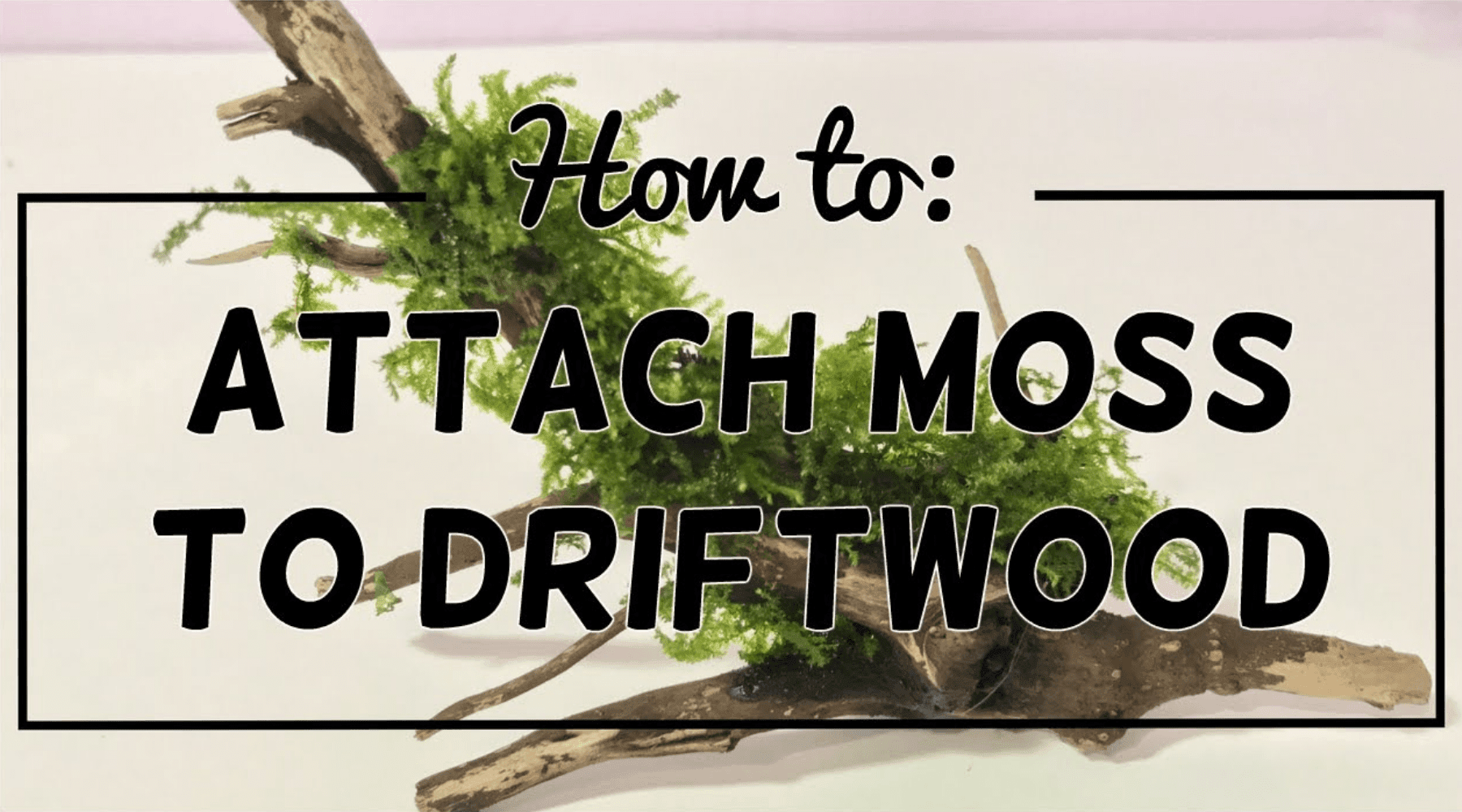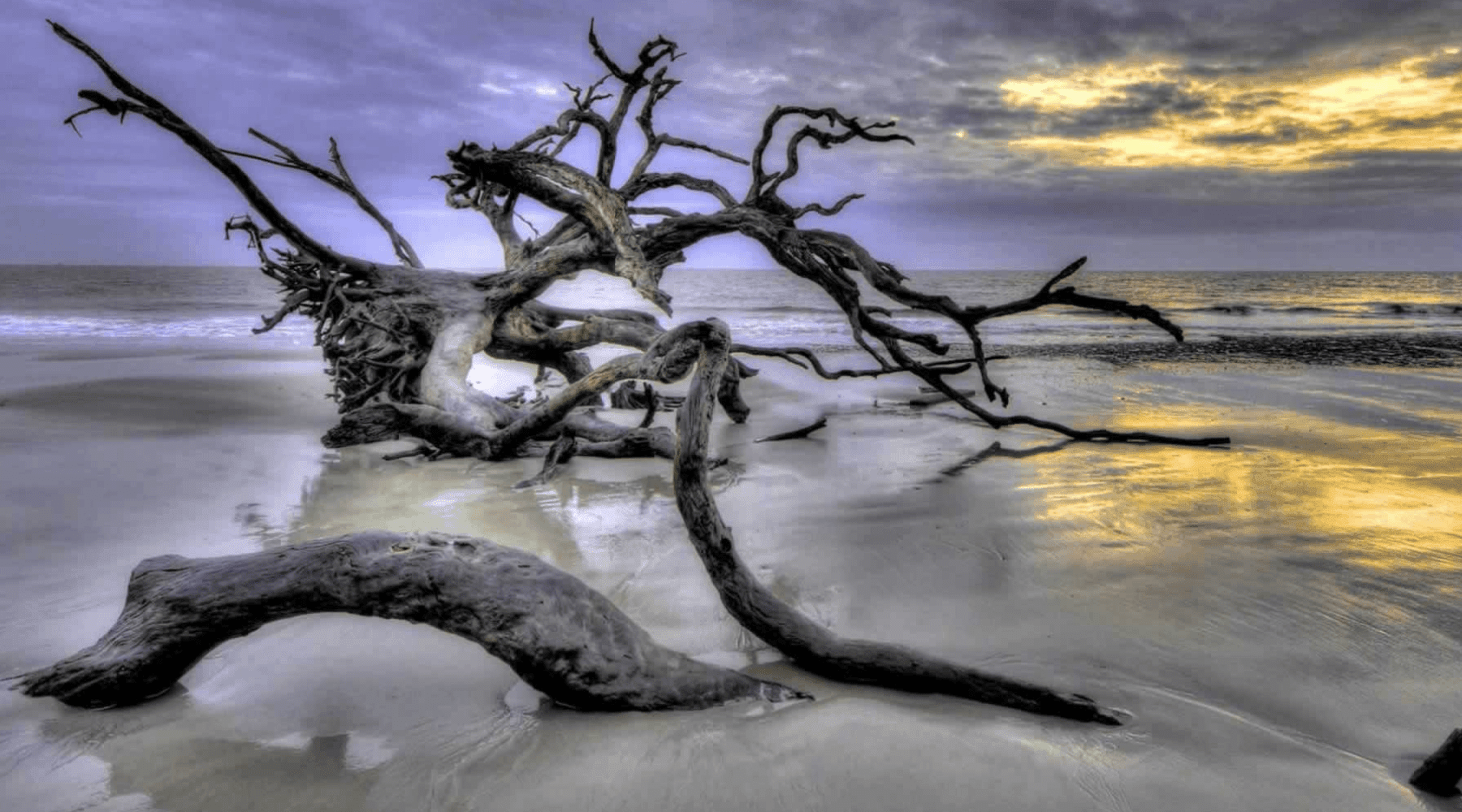27 Best Driftwood For Aquarium in 2019
Top Aquarium Driftwood Types

Aquarium Driftwoods are the widely used components for fish tank decoration. These driftwoods for aquariums add stunning effects to your fish tank. There are various particular types of fish tank driftwood with charming colours and shapes. They help to create a beautiful scenario inside your aquarium co-operating with avatars, stones, rocks and woods.
Fish tank driftwood requires relieving and submersion, else it tends to spill tannins and may grossly influence the shade of aquarium water. Undoubtedly, you wouldn't need your fish tank water to be contaminated as this will make your aquarium pets endure.
Suggested: - Aquarium Water Quality Management Guide
To choose the best driftwood based on your interest, we have various driftwoods for the aquarium. Let’s dive into them.
Top Aquarium Driftwoods Types
1. Bonsai Driftwood
 Bonsai driftwood creates a dazzling, all-natural look inside your fish tank. You can capture the beauty of nature using an organic bonsai tree.
Bonsai driftwood creates a dazzling, all-natural look inside your fish tank. You can capture the beauty of nature using an organic bonsai tree.
Bonsai trees are handmade and handcrafted by renowned artists. They are unique for their outstanding shape and different sizes. If you think of creating an outstanding environment for fish and shrimps using rocks, grasses, air plants, marbles and synthetic trees, Bonsai Driftwood Tree will be the best option to choose.
There are different types of popular Bonsai Driftwoods, you can check from our store -
- Nature style Bonsai
- Cascade Style Bonsai
| Pros | Cons |
|---|---|
| ✔ Handmade and Handcrafted by famous artists. ✔ 100% Natural Wood ✔ A piece of art combining different woods. ✔ Creates a natural Green environment. ✔ Available in different shapes and sizes ✔ Safe for your fish and underwater flora ✔ Improves the quality of your water ✔ Soften the water and lower the pH level ✔ Easy to work with than natural driftwood pieces ✔ Perfect for large, small, planted, community and even nano tanks ✔ Create perfect homes for shrimp, fishes, and other inhabitants ✔ Can be used with aquatic plant species such as anubias, Bucephalandra, ferns, and aquatic moss species. ✔ Can be used to mimic the foliage on natural bonsai trees. |
✗ Need careful maintenance ✗ Leach out tannic acids ✗ Buoyant so need to soak. |
Buy Bonsai Driftwood For Your Fish Tank
2. Manzanita Driftwood

Manzanita driftwood is a branchy driftwood with famous style. It’s expensive but considered a good choice for long-term investment. Guarantee the wood has had sufficient time to fix. Avoid “Crude” or freshly fallen wood to get relieved from aquarium water pollution. It’s very popular because of its flexibility considering aquarium sizes.
| Pros | Cons |
|---|---|
| ✔ Extra Ordinary Shape ✔ Provides anti-bacterial properties for the inhabitants ✔ Premium Driftwood that can lower the PH and water hardness. ✔ Leach out a low amount of PH. ✔ Perfect for freshwater setups ✔ Buoyant to wear as compared to other types of driftwood ✔ Helps buffer certain rocks that may slightly raise the PH ✔ Comes with the branchy appearance ✔ Rot-resistant due to the extremely slow decay ✔ Saturate the branch allowing it to sink easier ✔ Aiming to build a blackwater biotope ✔ Chemically inert and non-toxic ✔ Safe for fish, reptiles, and invertebrates. ✔ Serves a long-lasting investment |
✗ Large and dense wood to work with ✗ Can easily be broken down into smaller pieces ✗ Would not be ideal for hard water enclosures that require the PH to be above 7 ✗ Not recommended to use it as fresh or raw primarily as it can contaminate water. ✗ Need to boil it for 2-12 hours to release tannins ✗ Requires long periods of pre-soaking or anchoring to ensure floating |
3. Mopani Wood (Gnarly Driftwood)
 Mopani is thicker in style and is a solid wood. Unusual branching fits large aquariums. It reduces pH and softens water. You can identify it by its particular strong structure, bi-tone hues and Nobule like developments. It is an incredible steady base for progressively complicated plants or driftwoods. It is extremely popular in the aquarium hobby.
Mopani is thicker in style and is a solid wood. Unusual branching fits large aquariums. It reduces pH and softens water. You can identify it by its particular strong structure, bi-tone hues and Nobule like developments. It is an incredible steady base for progressively complicated plants or driftwoods. It is extremely popular in the aquarium hobby.
| Pros | Cons |
|---|---|
| ✔ Dramatic two-toned wood adds striking shapes and textures ✔ Helps to soften water ✔ Great wood to use in soft water biotypes ✔ Termite resistant and signature swirl pattern ✔ Harvested from Colophospermum Mopane ✔ Nobule like developments ✔ Loosen debris caught in the grain, ✔ Leach out tannic acids that doesn’t discolour water. ✔ Won't harm your tank ✔ Slightly lower your pH levels ✔ Beneficial for freshwater tanks that thrive in parameters below 7 PH. ✔ Provide shelter for your freshwater tropical fish ✔ Non-toxic & Safe for fish, reptiles, and invertebrates. ✔ Heavy and sinks immediately |
✗ Need to soak your driftwood to avoid discolour ✗ Leach tannins. ✗ Has the tendency to hold tree sap for long periods of time ✗ Not recommended to have around inhabitants as it can be toxic in many cases and lead to fatalities if digested ✗ Would not be ideal for hard water enclosures that require the PH to be above 7 ✗ Often requires long periods of pre-soaking or anchoring for floating ✗ Rate of decay ✗ Not considered rot-resistant ✗ Need monitoring after extended periods of use |
4. Cholla Wood (Cacti Wood)

Cholla is a lovely designed style of wood. It’s difficult to get and expensive. You can distinguish it by its hole-like structure. It has more solid varieties and lasts longer.
Difficult and often expensive to obtain it should be purchased if found at a low price! It can be easily identified by its hole-like structure as seen below. Cholla wood is unlikely to last as long as more solid varieties. Fine stemmed or intricate patterns tend to wear away the fastest in the aquarium over a period of years to months.
| Pros | Cons |
|---|---|
| ✔ Great wood to use in softwater biotypes as well as enclosures ✔ Exceptional and unique appearance ✔ Provides a place for inhabitants to hide, breed and eat ✔ Non-toxic, making it safe for all kinds of inhabitants ✔ One of the lighter types of vivarium woods used in the hobby ✔ Easily sinkable ✔ Easy to saturate with water |
✗ Can harbour debris and pest relatively easy. ✗ Need to give it a thorough cleaning before use when it’s acquired for the first time. ✗ Would not be perfect for hard water enclosures that need the PH to be above 7 ✗ Often needs long periods of pre-soaking or anchoring for floating ✗ Rate of decay ✗ Not considered rot-resistant ✗ Need monitoring after extended periods of use |
5. Malaysian Driftwood (Blackwood)

It’s mostly purchased as a large piece. It’s solid and perfect for a very large fish tank. This wood can be identified by its distinctive orange colour. For this reason, it also has a higher risk of leaching tannins.
| Pros | Cons |
|---|---|
| ✔ Tough appearance ✔ Excellent driftwood for all level hobbyists ✔ Ideal for large-sized fish tanks ✔ Unique orange colour ✔ No potential dangers woods typically ✔ Add detail to any enclosure ✔ Hold up for a relatively long time before decay ✔ Releases the moderate levels of tannin that helps in freshwater setups ✔ Ideal for Blackwater tanks ✔ Provide a place for inhabitants to hide, breed and eat ✔ Non-toxic and safe for all kinds of inhabitants |
✗ Be at risk for percolating tannins. ✗ Has a tendency of discolouration ✗ Need pre-soaking to prevent dark coloured water. ✗ Often takes a long period of time to saturated before use ✗ Would not be perfect for hard water walled in areas that require the PH to be over 7 ✗ Often requires extensive stretches of pre-dousing or tying down for skimming ✗ Rate of rot ✗ Not considered spoiling safe |
6. Azalea Roots

Originated from Asia, 'Water Azalea' frequently sold under the name 'Spiderwood'. They have magnificent branching structures. Fine 'vines' distending from the wood will regularly spoil and break down 6-12 months.
Water Azalea is a lovely expansion to any aquarium, small or large that is not harmful to your fish. Basically, it’s popular in a small fish tank because of its intricate nature. Like Rhododendron it has many branches.
Azalea Driftwood can have fine branches which won't keep going as long as the thicker ones. Experts recommend thicker branched varieties.
| Pros | Cons |
|---|---|
| ✔ Excellent driftwood for all level hobbyists ✔ No potential dangers ✔ Add detail to any enclosure ✔ Hold up for a relatively long time before decay ✔ Releases the moderate levels of tannin that helps in freshwater setups ✔ Provide a place for inhabitants to hide, breed and eat ✔ Non-toxic and safe for all kinds of inhabitants |
✗ buoyancy in nature ✗ Pretty Stubborn wood to sink ✗ Needs plenty of prep time ✗ Would not be perfect for hard water walled in areas that require the PH to be over 7 ✗ Often requires extensive stretches of pre-soaking or tying down for skimming ✗ Rate of rot ✗ Not considered spoil safe ✗ Has a shelf-life |
7. Rosewood Roots
 Unusual and thick branching wood. This driftwood can create dazzling effects by having the roots branch down into the substrate. It is commonly used in aquascaping competitions. Aquarists use it to emulate forest trees and large root systems that flow down into the water column. Undoubtedly it's a very beautiful driftwood for the aquarium.
Unusual and thick branching wood. This driftwood can create dazzling effects by having the roots branch down into the substrate. It is commonly used in aquascaping competitions. Aquarists use it to emulate forest trees and large root systems that flow down into the water column. Undoubtedly it's a very beautiful driftwood for the aquarium.
| Pros | Cons |
|---|---|
| ✔ Create an outstanding effect inside your fish tank ✔ Helps to emulate forest trees And large root systems ✔ Make great tunnels for your Betta to swim through ✔ ideal to planted and freshwater tanks ✔ Self-sinking requires no weights to keep down ✔ varies widely in shape and overall form |
✗ Difficult to find though. ✗ Regularly requires extensive stretches of pre-drenching or tying down for floating ✗ Need to be creative in times of aquascaping |
8. Mesquite Driftwood
 Mesquite is an incredible decision for aquarists with huge aquariums that look for a solitary piece of driftwood. Lovely branching driftwood. Cured pieces can be incredibly costly but also exceptionally mind-boggling and wonderful. Even you can keep it in your small fish tank too. To net the best yield, sellers often break the larger pieces into smaller batches and sell them.
Mesquite is an incredible decision for aquarists with huge aquariums that look for a solitary piece of driftwood. Lovely branching driftwood. Cured pieces can be incredibly costly but also exceptionally mind-boggling and wonderful. Even you can keep it in your small fish tank too. To net the best yield, sellers often break the larger pieces into smaller batches and sell them.
| Pros | Cons |
|---|---|
| ✔ Can make a stunning addition to your fish tank ✔ Best for bigger fish tanks ✔ Can be broken down and used in smaller fish tanks ✔ Provides splendid results if you know how to do aquascaping well. |
✗ Toxic to some amphibians ✗ Fairly expensive ✗ May be toxic to both fish and amphibians as it’s an oily tree ✗ Add it with a lot of caution |
9. Ribbon Wood
 An excellent dark piece for smaller aquariums. For its darkest nature, it often requires curing. It has wonderful curves and a textured finish. With lighter substrates, it works very well. It is an extraordinary decision for a stream style aquarium. Perfect for your river-style aquarium. It’s a very popular driftwood considering Java fern and anubias.
An excellent dark piece for smaller aquariums. For its darkest nature, it often requires curing. It has wonderful curves and a textured finish. With lighter substrates, it works very well. It is an extraordinary decision for a stream style aquarium. Perfect for your river-style aquarium. It’s a very popular driftwood considering Java fern and anubias.
| Pros | Cons |
|---|---|
| ✔ Handcrafted driftwood ✔ Man-made driftwood with wonderful curves and textured finish ✔ Can be a stunning piece for river-style aquarium ✔ Works best with java fern and anubias ✔ No toxic or chemical material to harm and threaten your fish ✔ Perfect For Cichlids, Reptiles Or Any Aquarium/terrarium Environment. |
✗ Regularly requires extensive stretches of pre-drenching or anchoring for gliding ✗ May not be a perfect choice for those who do not like black colour ✗ Not suitable for bigger aquariums |
10. Beefwood
It creates expensive delightful root frameworks.and is reserved for taller tanks. It is considered as a great choice for attaching plants and greeneries. It tends to be hard to buy and will probably require searching out a private dealer.
| Pros | Cons |
|---|---|
| ✔ Very soft ✔ Incredibly hardwood more akin to Ipe than Pine ✔ Provides an antique look ✔ Convenient for taller tanks ✔ Great Choice for attaching plants and greeneries. |
✗ Rare driftwood ✗ Not available everywhere ✗ Can be expensive |
11. Australian Pine
Australian pine is not the most alluring sort of driftwood but helpful for lower hardscape or relaxing water. It's solid and thick structure makes it perfect for use as a strong base for more intricate driftwoods or plants to be put on top with ease.
| Pros | Cons |
|---|---|
| ✔ Convenient for lower hardscape ✔ Can be used as a strong base ✔ Can be found easily ✔ Not expensive ✔ Doesn’t rot in water easily. |
✗ May Leach toxic sap into the water, poisoning fish if you do not dry it properly ✗ Need to Monitor your phosphates and nitrogen. |
12. Madrona
 Madrona large uncut pieces are uncommon and costly. They are great for your larger fish tank. The streaming nature makes it appealing for both aquarists and house designers. It is solid with a wonderful lined surface.
Madrona large uncut pieces are uncommon and costly. They are great for your larger fish tank. The streaming nature makes it appealing for both aquarists and house designers. It is solid with a wonderful lined surface.
| Pros | Cons |
|---|---|
| ✔ A great piece for larger fish tank ✔ Great driftwood for both aquarists and home designers ✔ Leach out a low amount of PH ✔ Perfect for freshwater setups ✔ Safe for fish, reptiles, and invertebrates. |
✗ A rare and costly piece ✗ Would not be perfect for hard water walled in areas that require the PH to be over 7 ✗ Need to boil it to release tannins ✗ Requires pre-soaking or anchoring to ensure floating |
13. Rhododendron Roots
 Rhododendron is popular for its yellow-colour structure. It’s not always suitable for the aquarium if you buy it from the untrusted supplier. Some of these driftwoods contain grayanotoxins that can cause stomach, heart and nerve damage in humans and animals. It will be a good idea to remove the bark and boil it before setting up in your aquarium. It’s recommended to soak it for a few weeks. You can always change the water to avoid foul smell.
Rhododendron is popular for its yellow-colour structure. It’s not always suitable for the aquarium if you buy it from the untrusted supplier. Some of these driftwoods contain grayanotoxins that can cause stomach, heart and nerve damage in humans and animals. It will be a good idea to remove the bark and boil it before setting up in your aquarium. It’s recommended to soak it for a few weeks. You can always change the water to avoid foul smell.
| Pros | Cons |
|---|---|
| ✔ Natural wood with stunning yellow effects ✔ A Solid wood ✔ Long-lasting in the wet environment ✔ Old stems/ roots are better to use ✔ Makes your aquarium more vividly, and comfortable |
✗ Often requires long periods of pre-soaking or anchoring for gliding ✗ Release toxins to water that needs proper soaking before using. |
14. Western Hemlock Roots
Western Hemlock Roots Driftwood is another excellent choice for very large aquariums. This is extremely rare so expensive in nature. This large piece of driftwood is not perfect for your small fish tank. This is on the grounds that its character and examples must be perceived from a distance.
| Pros | Cons |
|---|---|
| ✔ Suitable for bigger aquariums ✔ Safe for fish, reptiles, and invertebrates. ✔ Provides an aesthetic look |
✗ Expensive Roots ✗ One of the rarest driftwood ✗ Not suitable for small fish tank |
15. Contorted/ Corkscrew Willow
Corkscrew willow creates a stunning effect with its thin and stringy branches. It’s suitable for short-term aquascaping as it doesn’t last long like other varieties of driftwood. If they are free of bark and cleaned, you can use it.
| Pros | Cons |
|---|---|
| ✔ Creates an amazing look ✔ nontoxic and a great addition to tanks ✔ Safe for fish, reptiles, and invertebrates. ✔ Leach out a very little chemical |
✗ Release chemicals to the water that needs to be cleaned out. |
16. Buttonwood
 Buttonwood is an astounding addition to moderate aquariums. With it’s decent “white colouration, it functions admirably with darker substrates and splendid green plants
Buttonwood is an astounding addition to moderate aquariums. With it’s decent “white colouration, it functions admirably with darker substrates and splendid green plants
| Pros | Cons |
|---|---|
| ✔ An excellent addition ✔ Spectacular black and white colour. ✔ Available in all shapes and sizes ✔ can grow to resemble the trunks of large trees |
✗ Often needs long periods of pre-drenching or anchoring for floating ✗ May not suitable for small aquariums. |
17. Linden Trees - Tilla sp
Linden Tree is a very uncommon and rare driftwood that shows stunning outcomes in your aquarium. If you want to get this type of driftwood, you have to be vigilant to get the pieces from professional driftwood curers mostly.
| Pros | Cons |
|---|---|
| ✔ Uncommon and rare driftwood ✔ Great results ✔ Especially used by professional aquarists |
✗ Can be Expensive ✗ Hard to get them |
18. Sumatran Driftwood
 Sumatran driftwood is harvested from dead mangrove trees in Indonesia and Sumatra during land clearing. The root is collected from the wild, dried and sandblasted to remove the bark. It gives the wood a smooth, attractive look. Typically it is used in big freshwater aquariums as a centrepiece.
Sumatran driftwood is harvested from dead mangrove trees in Indonesia and Sumatra during land clearing. The root is collected from the wild, dried and sandblasted to remove the bark. It gives the wood a smooth, attractive look. Typically it is used in big freshwater aquariums as a centrepiece.
| Pros | Cons |
|---|---|
| ✔ Creates aesthetically pleasing effect in the aquarium ✔ Provides a safe haven for aquatic life ✔ Release helpful tannins that suppress bad bacteria and fungus ✔ Help feed fry, some species of pleco and invertebrates |
✗ float for a short time/ few weeks only after soaking ✗ Often release brown colour tannins that can be solved changing the water. |
19. Bogwood

Bogwood is easy to work with. Basically, It looks like a submerged stump or branch and looks nice in just about many aquascape designs. It’s also easy to get java fern, Anubias and mosses to attach and cover bogwood. You may need to soak smaller, non-weighted pieces of bogwood to get them to sink.
Bogwood is famous for leaching tannins into the water. So, it needs to be cured properly.
| Pros | Cons |
|---|---|
| ✔ Creates the aquatic biotope in the aquarium ✔ Creates a splendid look ✔ Provides live food in the form of infusoria for fry, small fish and invertebrates. ✔ Provides essential trace minerals for all life in the tank (including plants). ✔ Reduces fungus and bacterial disease in your aquatic animals ✔ Provides essential fibre in their diet for catfish like Bristlenose or Otocinclus fish. ✔ Provides hiding places for your animals |
✗ Hard to find true bogwood ✗ Leach out a huge amount of tannins ✗ Need to be cured frequently |
20. Redmoor Root Wood

Redmoor root wood makes a thick tangle of smaller than usual roots that fish love to explore. The tangle of sensitive roots looks simply like tree roots originating from a waterway bank. It makes a genuine three-dimensional centre point to the aquarium. The wood has a ruddy tint that adds an unobtrusive vibrancy to the aquascape without causing a lot to notice itself. Redmoor root wood tends to drift. A few pieces become water-logged following two weeks of restoring.
| Pros | Cons |
|---|---|
| ✔ Perfect for creating a natural, unique aquascape ✔ Perfect for any sizes of fish tank ✔ Creates a true three-dimensional focus point to the aquarium ✔ Adds a subtle vibrancy to the aquascape ✔ Float for a long time ✔ Create an artistic look |
✗ Can be very expensive ✗ The curing process may take a long time |
21. Marsh Root
 Marsh root provides a striking centrepiece to the aquarium. This driftwood is popular in Europe and is sometimes available in North America. The wood has been altogether splashed and matured submerged.
Marsh root provides a striking centrepiece to the aquarium. This driftwood is popular in Europe and is sometimes available in North America. The wood has been altogether splashed and matured submerged.
| Pros | Cons |
|---|---|
| ✔ Doesn’t release tannins ✔ No Discolouration problem ✔ Works best with light-coloured gravel substrate |
✗ Must soak it to release salty chemicals |
22. Saba Root
Saba Wood is a profound, dynamic brown coloured shading. Additionally, it has a dazzling unpretentious streaking all through the wood. Saba wood has a smooth, nearly wild ox horn style surface.
The vast majority of the wood sold for aquariums resembles a stump with small fanning.
| Pros | Cons |
|---|---|
| ✔ Vibrant brown colour ✔ Uncommon piece ✔ Famous Buffalo horn style texture |
✗ Release tannins that create brown colour water ✗ presoaking is needed before setting up inside aquarium |
23. Jangle wood
 Jangle Wood resembles a blend of extended driftwood and stump. It's frequently connected to piece of slate to keep the stump upstanding. It can have a dull shading or a faded appearance. It's most appropriate for larger aquariums as a centrepiece. It doesn’t release toxic.
Jangle Wood resembles a blend of extended driftwood and stump. It's frequently connected to piece of slate to keep the stump upstanding. It can have a dull shading or a faded appearance. It's most appropriate for larger aquariums as a centrepiece. It doesn’t release toxic.
| Pros | Cons |
|---|---|
| ✔ Convenient for larger aquarium ✔ Stunning centrepiece ✔ Doesn’t leach tannins ✔ Safe for aquatic life inside the aquarium |
✗ Not suitable for a smaller aquarium |
24. Tigerwood

This driftwood has a pale tan appearance and darker brown colouration. Each piece is diverse fit as a fiddle. Tiger Wood is exceptionally stretched yet not thin or spidery. Most pieces sold for aquariums are huge or extra-huge. You can join plants and greeneries effectively to this sort of wood.
| Pros | Cons |
|---|---|
| ✔ Pale Tan Appearance ✔ Lighter-weight wood ✔ Availability of different sizes and shapes ✔ Branchy and voluminous ✔ Easily attachable with other aquarium plants ✔ Does not discolour your tank |
✗ Takes a few days to sink if not boiled and/or initially weighed down |
25. Pacific wood
 Pacific Wood appears to be comparable to Malaysian driftwood. It has a similar texture to Malaysian driftwood yet with a lot more bunches, tangles and complex character. Pacific Wood has different sizes and shapes depending on aquarium sizes. It may release tannins that create the water discolouration. Boil it before applying to your aquarium to reduce this effect.
Pacific Wood appears to be comparable to Malaysian driftwood. It has a similar texture to Malaysian driftwood yet with a lot more bunches, tangles and complex character. Pacific Wood has different sizes and shapes depending on aquarium sizes. It may release tannins that create the water discolouration. Boil it before applying to your aquarium to reduce this effect.
| Pros | Cons |
|---|---|
| ✔ Great piece of driftwood for your aquarium ✔ Different sizes and shapes ✔ More knots, tangles and complex character ✔ Safe for aquarium fishes and other aquatic life. ✔ Attractive results. |
✗ Can leech tannins that can cause the yellow or brown tint to your water. ✗ Buoyant and will float if it's not fully waterlogged prior to use in tank |
26. Tree Root Driftwood
Tree Root Driftwood is a completely natural driftwood similar to Bonsai trees, Tree Root driftwood is smooth and tan coloured with a more open appearance. They are preferable to use with mosses, Buceplant and Anubias. It needs to be soaked properly and conditioned to sink it.
| Pros | Cons |
|---|---|
| ✔ A newer type of aquarium driftwood ✔ trunk-like appearance with spokes coming out of its ✔ Perfect driftwood to use it with Mosses, Buce Plants and Anubias |
✗ Buoyant and will float if it’s not fully waterlogged prior to use in tank |
27. Grape Wood

Grapewood, a beautiful driftwood, supports mold growth. You can buy sandblasted grape wood it with polyurethane. Polyurethane is fish safe once dry, yet finding any that are evaluated for submerged use can be problematic. They work best in biotope and planted aquariums instead of a customary fish tank.
| Pros | Cons |
|---|---|
| ✔ Safe for the tank and pleco ✔ Non-toxic ✔ interesting smell and flavour ✔ A beautiful addition to your tank ✔ Naturally, drop the ph ✔ Mold is harmless, and plecos and snails will eat it ✔ Softwood ✔ A high concentration of sugar in comparison to other woods |
✗ Must be sprayed it with polyurethane to keep it fine ✗ Some Grapewood rots quickly ✗ Gets a white fungal growth after a few days submersed ✗ Does not sink easily ✗ will take a considerable time for it to become waterlogged sufficiently ✗ Often it makes the tank clouded terribly |
Driftwoods are being used for decoration for over 100 years now. People love to have natural environments inside their room, office and even public places. There is no harm to have an aquarium and brings natural harmony to the aquascape. In this case, Driftwoods have no alternative. So, you can choose any of the above-mentioned driftwood types to do aquascaping. The only thing to have in mind is to use safe wood elements and properly condition it before setting it up into your aquarium.
According to my opinion and experts recommendation, Bonsai Driftwood is getting popular day by day as it helps to create a great natural forest inside your fish tank.
What is your opinion about Driftwoods?
Which driftwood is the best according to your experience?
Let me know if I miss anything!!

